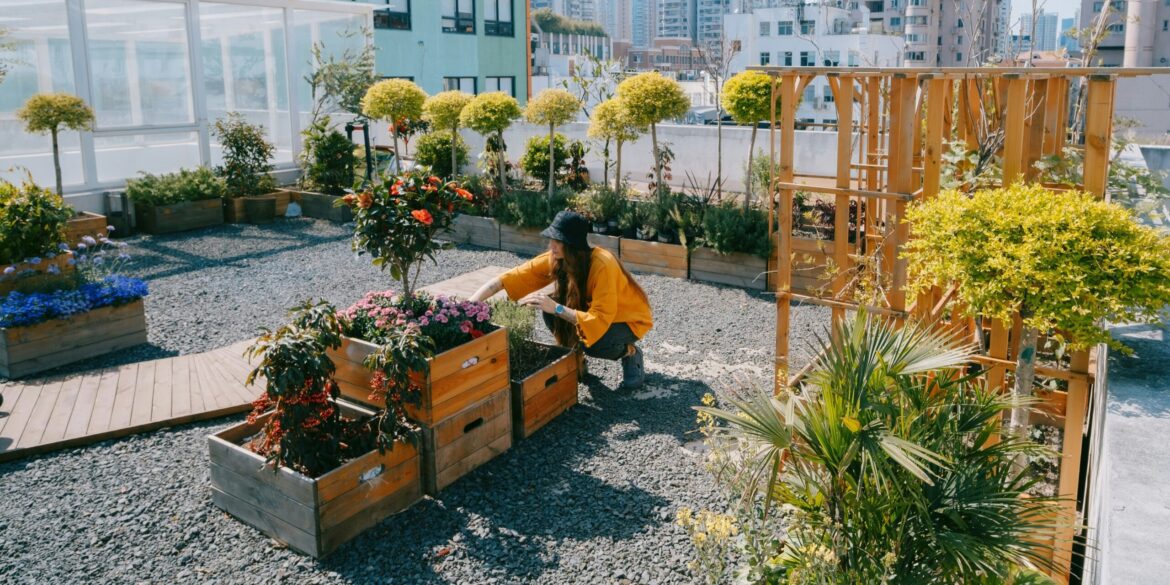In cities across the United States, urban gardening is blossoming into a vibrant movement, transforming concrete jungles into pockets of green and fresh food. As more city dwellers seek healthier lifestyles, sustainable living, and stronger community ties, urban gardening has emerged as a powerful tool to meet those needs.
The Rise of Urban Gardens and Rooftop Farms
Urban gardening refers to growing plants, vegetables, and fruits within city environments — on rooftops, in community plots, balconies, or even indoors using vertical farms and hydroponics. This trend has surged in popularity, driven by growing awareness about food security, environmental sustainability, and the desire for fresher, locally sourced produce.
According to the American Community Gardening Association (ACGA), the number of community gardens in U.S. cities has grown by over 30% in the last decade. Cities like New York, Chicago, Los Angeles, and Portland have become hubs for urban agriculture, with dozens of community gardens and rooftop farms dedicated to producing fresh food for local residents.
For example, in New York City, the nonprofit organization “GreenThumb” supports more than 600 community gardens, providing space and resources for residents to cultivate their own fruits and vegetables. Meanwhile, Brooklyn Grange operates one of the world’s largest rooftop soil farms, producing over 50,000 pounds of organic vegetables annually on several city rooftops.
Benefits Beyond Fresh Produce
While access to fresh food is a primary driver, experts emphasize that urban gardening delivers far more benefits. Environmental sustainability is a key aspect. Urban farms reduce food miles — the distance food travels from farm to plate — which significantly lowers greenhouse gas emissions related to transportation and storage.
Gardens also help mitigate urban heat island effects by cooling neighborhoods, improving air quality, and enhancing biodiversity by providing habitats for pollinators like bees and butterflies. A study from the University of California, Berkeley, found that green spaces in cities can reduce temperatures by up to 7 degrees Fahrenheit compared to surrounding urban areas.
Mental Health and Community Connections
In addition to environmental benefits, urban gardening has profound positive effects on mental health. The act of gardening reduces stress, improves mood, and provides a sense of purpose. During the COVID-19 pandemic, many city residents turned to gardening as a therapeutic activity to cope with isolation and anxiety.
Dr. Susan Miller, a psychologist specializing in nature therapy, notes, “Gardening reconnects people with nature, which is critical for mental well-being, especially in dense urban settings. It also fosters mindfulness and physical activity, both proven to enhance mental health.”
Community gardens serve as social hubs where people of diverse backgrounds come together, forging bonds and strengthening neighborhood ties. These spaces often become venues for workshops, cultural events, and shared meals, fostering a sense of belonging and cooperation.
Urban Gardening and Food Justice
Urban gardening also plays an important role in addressing food deserts—areas where access to affordable, nutritious food is limited. Low-income neighborhoods often lack grocery stores and fresh produce markets, leading to poor diets and related health issues.
Community gardens and urban farms help fill this gap by providing residents with locally grown fruits and vegetables, often at low or no cost. Programs like Detroit Black Community Food Security Network’s urban farms have not only increased access to healthy food but also empowered residents through education and job training.
Innovation and Technology in Urban Gardening
Technological advancements are making urban gardening more accessible and efficient. Vertical farming, which involves growing crops in stacked layers often indoors, uses less space and water than traditional agriculture. Companies like Plenty and AeroFarms are pioneering these methods in cities like San Francisco and Newark, producing leafy greens and herbs year-round with minimal environmental footprint.
Hydroponics and aquaponics systems, which grow plants without soil, are also gaining traction in urban settings. These systems can be set up in apartments, schools, and community centers, expanding gardening opportunities to those with limited outdoor space.
Challenges and Future Outlook
Despite its growth, urban gardening faces challenges. Limited space, soil contamination, water access, and regulatory hurdles can impede projects. City governments and nonprofits are increasingly stepping in to offer support through grants, zoning changes, and technical assistance.
For example, Chicago’s Urban Agriculture Program offers land leases and resources to urban farmers, helping overcome some of these barriers. Similarly, Philadelphia has converted vacant lots into productive garden spaces through the Philadelphia LandCare program.
Looking forward, experts predict that urban gardening will continue to expand, driven by rising consumer demand for sustainable and local food, climate concerns, and growing urban populations. Integrating urban agriculture into city planning is becoming a priority for municipalities seeking to improve food security and resilience.


